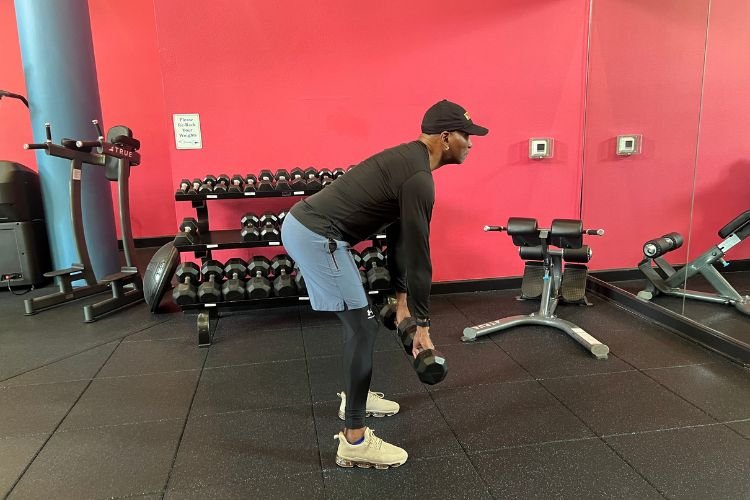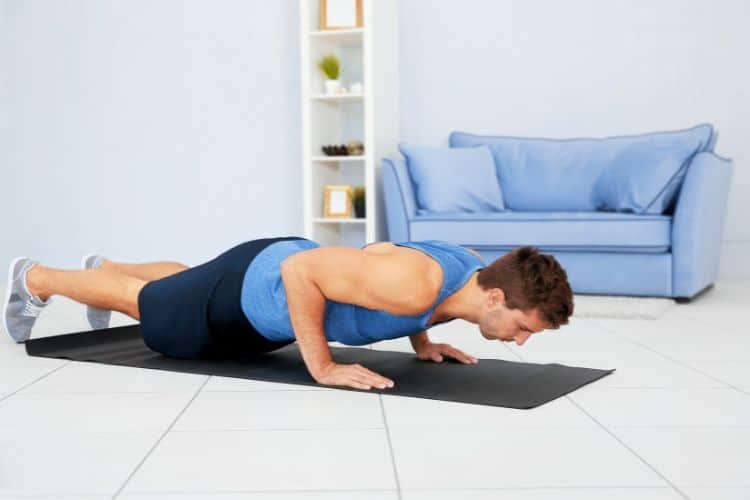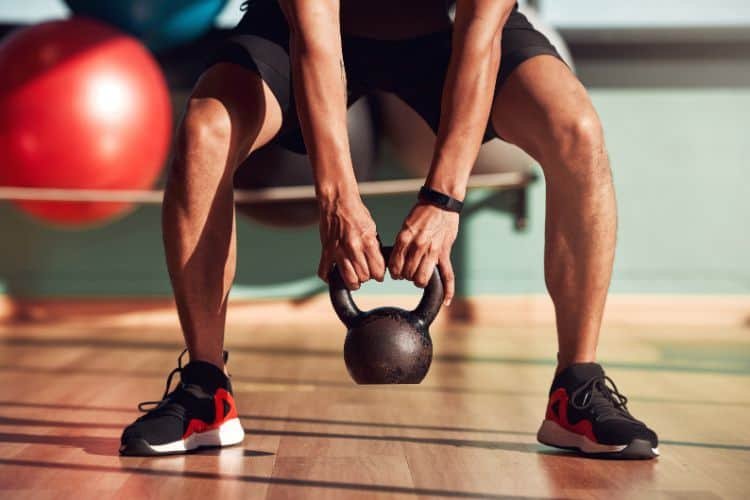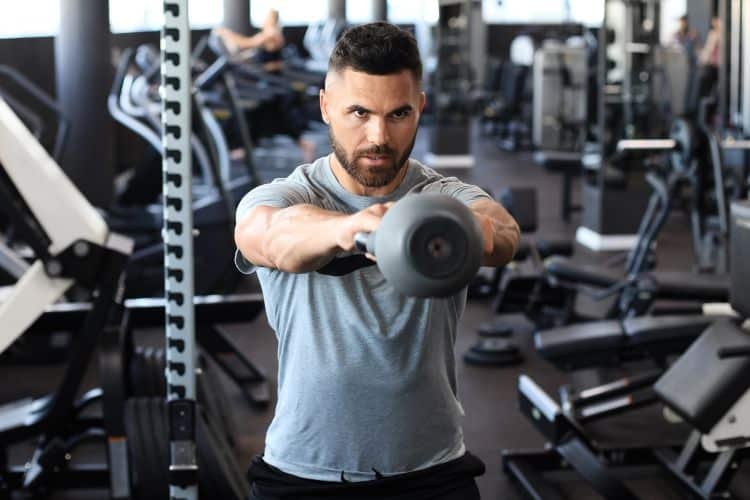
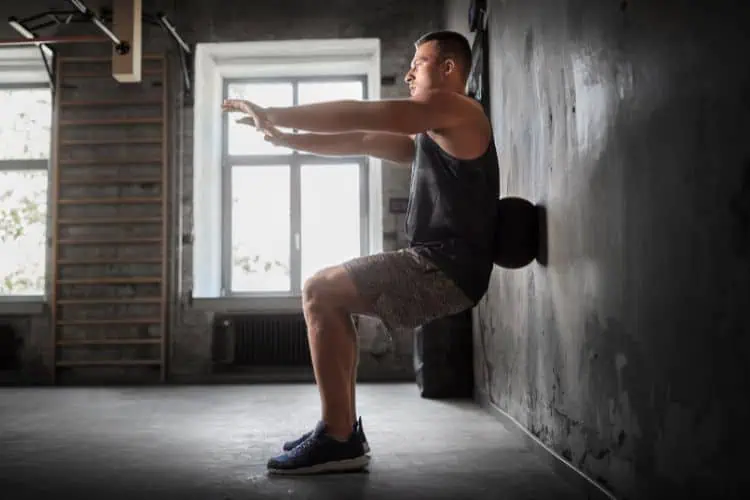
Wall squats, also known as wall sits, are an underrated yet highly effective exercise for building lower body strength, improving stability, and enhancing overall fitness. This seemingly simple move involves sitting against a wall in an imaginary chair position, challenging your muscles to hold the pose. Let’s delve into the remarkable benefits of wall squats and provide practical tips to incorporate them into your workout routine.
Benefits of Wall Squats
1. Strengthens the Lower Body
Wall squats are exceptional for building strength in the lower body. They target the quadriceps, hamstrings, glutes, and calves. Holding the squat position forces these muscles to engage isometrically, leading to improved endurance and strength over time. Unlike traditional squats, wall squats maintain constant tension on the muscles, amplifying their effectiveness.
2. Enhances Core Stability
While primarily a lower body exercise, wall squats also activate the core. To maintain the position, you must engage your abdominal muscles, which contributes to better balance and stability. Over time, this can improve your posture and reduce the risk of lower back pain.
3. Low-Impact Exercise
Wall squats are gentle on the joints, making them ideal for people recovering from injuries or dealing with conditions like arthritis. The exercise doesn’t involve repetitive movements that stress the knees or hips, allowing you to strengthen your muscles without aggravating joint pain.
4. Improves Muscular Endurance
Holding the wall squat position for extended periods builds muscular endurance. This type of strength is essential for daily activities, sports, and other physical pursuits. Improved endurance also means your muscles can perform for longer without fatigue.
5. Boosts Flexibility and Mobility
Wall squats require proper alignment and engagement of multiple muscle groups, which can help improve flexibility and mobility. Regular practice can enhance the range of motion in your hips, knees, and ankles, reducing stiffness and promoting functional movement.
6. Enhances Mental Focus and Discipline
Wall squats challenge your mental strength as much as your physical endurance. Holding the position for a specific duration requires focus, determination, and discipline. This mental resilience can carry over to other aspects of life, boosting your overall productivity and persistence.
7. A Convenient and Accessible Workout
One of the biggest advantages of wall squats is that they require no equipment. All you need is a flat wall and some space. This makes them perfect for home workouts, office breaks, or travel fitness routines. Whether you’re a beginner or an advanced athlete, wall squats can be adapted to suit your fitness level.
Tips And Benefits for Performing Wall Squats Effectively
1. Find the Right Position
Start by standing with your back flat against a wall and your feet about two feet away from it. Slide down the wall until your knees form a 90-degree angle and your thighs are parallel to the floor. Keep your feet shoulder-width apart and ensure your knees are aligned with your toes.
2. Maintain Proper Form
Proper form is crucial to maximize the benefits of wall squats and prevent injury. Keep your back pressed against the wall, and avoid arching or rounding it. Engage your core to stabilize your body and maintain a neutral spine. Your weight should be evenly distributed across your feet.
3. Start Small and Progress Gradually
If you’re new to wall squats, start with short durations, such as 10-15 seconds, and gradually increase your holding time as you build strength. Aim to add 5-10 seconds each week until you can hold the position for up to a minute or more.
4. Incorporate Variations
To keep your workouts engaging and challenging, try different wall squat variations to reap maximums benefits:
- Weighted Wall Squats: Hold a dumbbell or medicine ball to add resistance.
- Single-Leg Wall Squats: Lift one foot off the ground to target each leg individually.
- Wall Squats with Calf Raises: Add calf raises while holding the squat position to work your calves.
- Dynamic Wall Squats: Alternate between squatting and standing up to add a dynamic element.
5. Breathe Properly
Focus on controlled breathing while performing wall squats. Inhale deeply through your nose and exhale slowly through your mouth. Avoid holding your breath, as this can increase tension and fatigue.
6. Combine with Other Exercises
Wall squats can be paired with other exercises to create a comprehensive lower body workout. Combine them with lunges, step-ups, or glute bridges for a well-rounded routine that targets all major muscle groups.
7. Listen to Your Body: Benefits of Wall Squats
Pay attention to how your body feels during and after wall squats. If you experience pain in your knees, hips, or lower back, stop and reassess your form. Consider consulting a fitness professional to ensure you’re performing the exercise correctly.
Benefits And Common Mistakes to Avoid With Wall Squat
1. Placing Feet Too Close to the Wall
If your feet are too close to the wall, your knees will extend beyond your toes, putting unnecessary stress on the joints. Ensure your feet are positioned far enough away to form a 90-degree angle at your knees.
2. Allowing the Knees to Collapse Inward
Knee alignment is critical in wall squats. Avoid letting your knees collapse inward, as this can strain the joints and reduce the effectiveness of the exercise. Keep them aligned with your toes throughout the movement.
3. Not Keeping the Back Flat
Your back should remain flat against the wall throughout the exercise. Arching or rounding your back reduces the engagement of the targeted muscles and increases the risk of injury.
4. Holding the Position for Too Long
While building endurance is important, overexerting yourself can lead to muscle fatigue and strain. Gradually increase your holding time and take breaks as needed.
Incorporating Wall Squats into Your Routine
1. Warm-Up First
Before performing wall squats, warm up your muscles with dynamic stretches or light cardio. This prepares your body for the exercise and reduces the risk of injury.
2. Use Them as a Finisher
Wall squats make an excellent finisher for leg day workouts. After completing your primary exercises, perform a wall squat hold to fatigue your muscles and maximize your training session.
3. Include Them in HIIT Workouts
Add wall squats to high-intensity interval training (HIIT) workouts for a low-impact yet challenging interval. For example, perform a 30-second wall squat hold followed by 30 seconds of rest, and repeat for several rounds.
4. Track Your Progress
Keep a record of your wall squat duration and variations. Tracking your progress can help you stay motivated and set realistic goals for improvement.
5. Make It a Family Activity
Wall squats are simple enough for people of all ages to try. Encourage your family members to join you in a friendly wall squat challenge for fun and fitness.
Who Can Benefit from Wall Squats?
1. Beginners
Wall squats are an excellent starting point for those new to exercise. They help build foundational strength and stability without overwhelming complexity.
2. Athletes
Athletes can use wall squats to improve lower body strength, muscular endurance, and stability, enhancing their performance in sports and physical activities.
3. Older Adults
The low-impact nature of wall squats makes them ideal for older adults looking to maintain strength and mobility. They can be modified to suit individual fitness levels and abilities.
4. Rehabilitation Patients
Wall squats are often incorporated into physical therapy programs to strengthen the lower body and improve joint stability during recovery from injuries.
Wall squats are a versatile and highly effective exercise with numerous benefits for your lower body, core, and overall fitness. By incorporating them into your routine and following proper form, you can improve strength, endurance, and stability while minimizing the risk of injury. Whether you’re a beginner, athlete, or fitness enthusiast, wall squats are a valuable addition to any workout program. Start small, progress gradually, and enjoy the journey toward stronger, healthier muscles.
